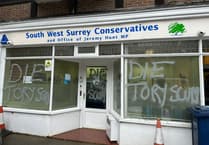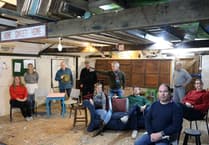A BOOK about four years of excavations of burial mounds on Petersfield Heath has been published.
The Barrows at the Core of Bronze Age Communities book and a supplementary volume are to be launched this month at Petersfield Museum.
The book exhaustively covers the museum’s community archaeology project People of the Heath: Understanding and Conserving Petersfield’s Prehistoric Barrows.
The project was overseen by two museum trustees, the museum’s curator and the two archaeologists undertaking the field work and associated research.
A spokesman for the museum in St Peter’s Road said: “We are excited to announce the publication of this eagerly- awaited study of the People of the Heath project.
“The result, presented in this book, is one of the most detailed archaeological records for such a cemetery in modern times, pointing to the significance of Petersfield Heath in the study of Bronze Age communities nationally.”
The book and supplementary volume were co-authored by Dr Stuart Needham, former curator of the European Bronze Age collections at the British Museum from 1977 to 2007.
Professional archaeologist George Anelay, founder of West Sussex Archaeology of Harting, was joint project director and co-author alongside Dr Needham.
The book outlines and details the project and gives the conclusions raised by the digs each summer from 2014 to 2017.
The project was launched after local archaeologists completed a survey of the Heath.
It was realised the Bronze Age cemetery, with its 15 bowl barrows, four saucer barrows, one disc barrow and one bell barrow, was of national significance.
The project attracted funding from the Heritage Lottery Fund, South Downs National Park Authority and East Hampshire District Council.
University archaeology students and scores of volunteers from the town were recruited each summer to help excavate test trenches on 14 of the 21 remaining Early Bronze Age burial barrows.
It’s thought likely there may have been more barrows from the period 3300 Before the Common Era (BCE) to 1200BCE, on the Heath and in the surrounding area.
But it’s likely they were unintentionally destroyed by farming, development, the digging of the Heath pond and the building of the golf course on the Heath.
As well as artifacts from the burial mounds, including four cremation containers – the remains of a box, a bag and two urns – flint tool ‘workshops’ were found on the 69 acres of heathland, pointing to its use by earlier settlers.
It is also likely there were at least 16 pre-history settlements within travelling distance of the Heath, whose cemetery has been likened to ones in Wessex on Salisbury Plain and around Stonehenge.
As part of the project there were workshops, and schools were invited to tour the digs. And in March 2018 there was a day-long project conference attended by nearly 200 visitors.
Held in Petersfield Festival Hall, it included 14 talks by speakers from across the UK and Europe who had been involved in the project.
A museum spokesman said: “The large group of burial barrows had seen no active research since they were mapped in the 1930s and there is no record at all of any past excavations.
“Yet it is one of the most impressive and diverse barrow cemeteries to have survived in south-east England, boasting at least 21 barrows of five or six different types.”
The welcome at the conference on Saturday, March 24, was given by the-then Petersfield mayor Jamie Matthews.
Dr Needham and George Anelay also gave presentations.
From January 20, copies of Barrows at the Core of Bronze Age Communities will be available from the gift shop at Petersfield Museum, where some of the most significant project finds, including burial urns and arrowheads, are on display.




